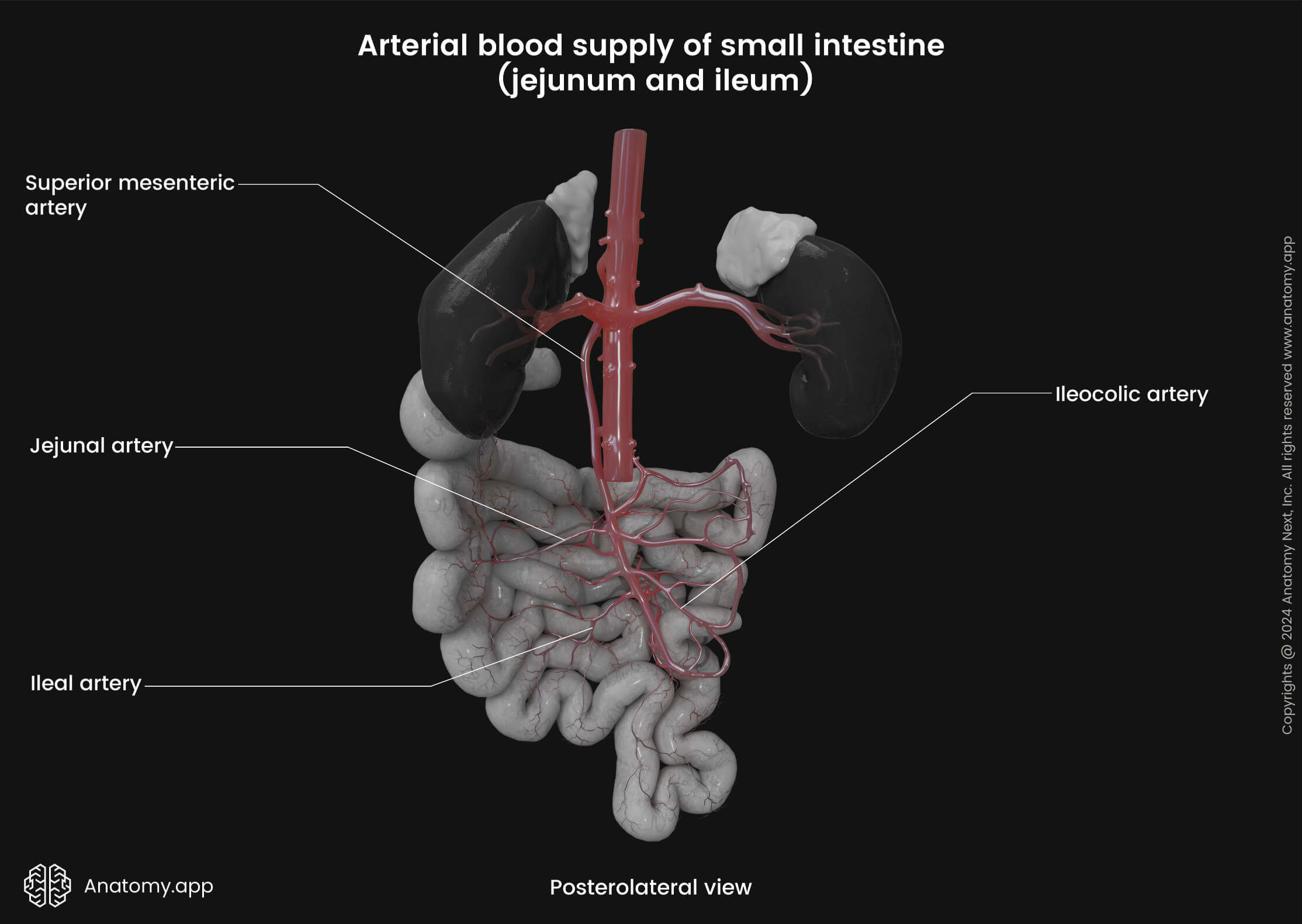- Anatomical terminology
- Skeletal system
- Joints
- Muscles
- Heart
- Blood vessels
- Blood vessels of systemic circulation
- Aorta
- Blood vessels of head and neck
- Blood vessels of upper limb
- Blood vessels of thorax
- Blood vessels of abdomen
- Blood vessels of pelvis and lower limb
- Blood vessels of systemic circulation
- Lymphatic system
- Nervous system
- Respiratory system
- Digestive system
- Urinary system
- Female reproductive system
- Male reproductive system
- Endocrine glands
- Eye
- Ear
Jejunal and ileal arteries
The jejunal and ileal arteries (collectively known as the intestinal arteries, Latin: arteriae intestinales) are vessels that arise from the left side of the superior mesenteric artery. They originate distally from the inferior pancreaticoduodenal artery. These arteries supply the jejunum and most of the ileum.
The intestinal arteries pass between two layers of the mesenterium, creating anastomosing arches (or arterial arcades) as they pass outward to supply the small intestine. The number of these arterial arcades increases distally along the small intestine. Extending from the terminal arcade are the vasa recta (straight vessels), which provide the final direct supply to the small intestine.
